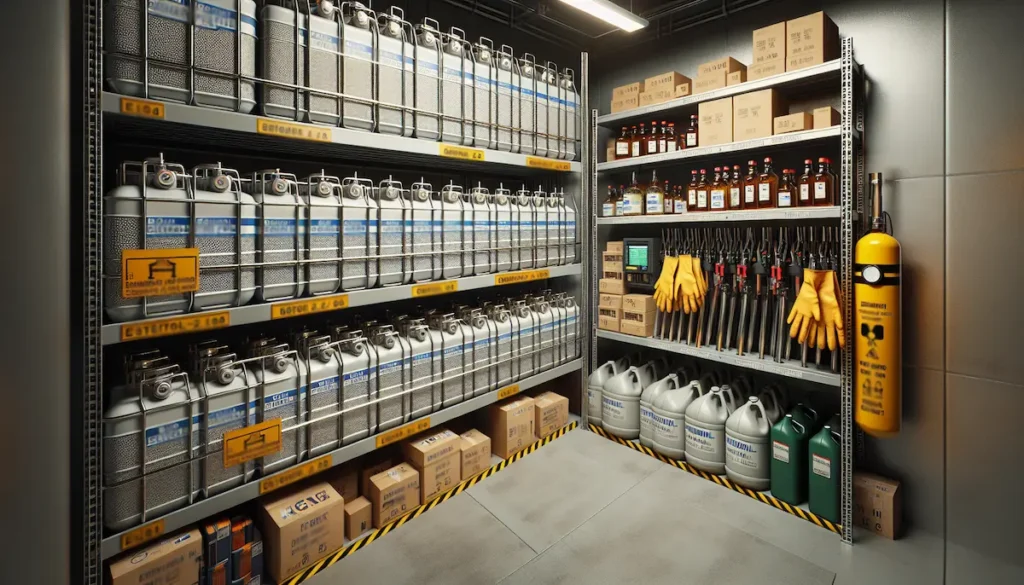

Could it be said that you are excited about finding the accepted procedures for Proper Storage Techniques for Your Bioethanol Fuel? Assuming this is the case, you’re perfectly positioned. Our far reaching guide is custom fitted to assist you with keeping up with the life span and nature of your perfect consuming fuel supply. Remain tuned to figure out how to store bioethanol fuel productively and safely.
When it comes to storing bioethanol fuel, the significance cannot be overstated. Proper storage procedures not only ensure safety but also play a crucial role in maintaining the fuel’s quality and longevity. By following a bioethanol fuel storage guide meticulously, you can safeguard your clean-burning fuel supply and prevent potential hazards. It’s essential to grasp the essential aspects of storage to avoid any mishaps.
In addition, understanding the synthetic properties of bioethanol fuel is imperative for safe capacity. As a profoundly combustible substance, bioethanol requires cautious taking care of to relieve the dangers of flames or blasts. Carrying out preventive measures, like standard assessments and adherence to capacity rules, can altogether diminish the probability of mishaps.
Are you ready to master the essential steps for storing bioethanol fuel safely? When it comes to ensuring the longevity and quality of your clean-burning fuel supply, following a comprehensive bioethanol fuel storage guide is paramount. By implementing some basic yet crucial steps, you can protect both your investment and your safety. Let’s delve into the key actions you should take to store bioethanol fuel securely.
To upgrade the security of bioethanol fuel capacity, it’s pivotal to tenaciously follow these basic yet viable advances. By focusing on subtleties like compartment trustworthiness, fixing, and natural variables, you can protect both your fuel and the encompassing regions from expected dangers or mishaps. Keep in mind, even little oversights away can have huge results, so exhaustiveness is critical.
Want to ensure your bioethanol fuel lasts as long as possible? Maintenance plays a pivotal role in preserving the quality and effectiveness of your fuel supply. By incorporating simple yet effective maintenance tips into your routine, you can maximise the longevity of your bioethanol fuel. Let’s explore some key strategies to keep your fuel in optimal condition.
By following these upkeep tips industriously, you can fundamentally draw out the life expectancy of your bioethanol fuel. Putting a brief period and exertion in keeping up with your fuel supply can take care of over the long haul by guaranteeing a dependable and proficient clean-consuming fuel source. Keep in mind, a very much kept up with capacity framework is the way to boosting both security and life span.
Looking to optimise the efficiency of your bioethanol fuel storage? Implementing top strategies in bioethanol fuel storage is essential to ensure maximum effectiveness and longevity of your fuel supply. By following expert-recommended techniques, you can enhance the performance of your storage system and maintain the quality of your bioethanol fuel. Let’s uncover the key strategies to boost efficiency in bioethanol fuel storage.
By integrating these state of the art systems into your bioethanol fuel capacity rehearses, you can essentially improve the productivity and viability of your fuel supply. Guaranteeing that your capacity framework is upgraded for execution can prompt expense reserve funds and a continuous fuel supply for your requirements. Keep in mind, little changes can prompt critical enhancements in productivity and life span.
Learn how to store bioethanol fuel safely and efficiently with Biofire Fuel! Follow our comprehensive guide to ensure the longevity and quality of your clean-burning fuel supply. Discover the best practices for bioethanol fuel storage and enhance safety standards. Explore our range of bioethanol products at Biofire Fuel and start implementing proper storage techniques for your bioethanol fuel today!
© 2025 27 Catering Ltd